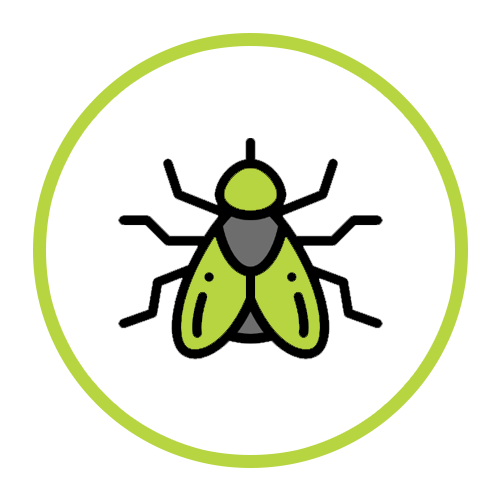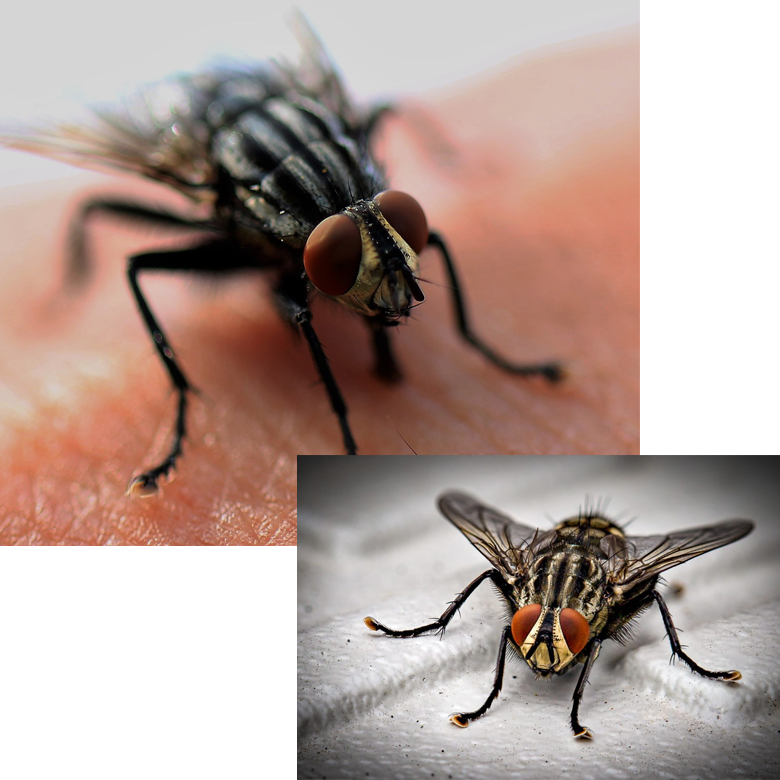Fly Control
Flies
affect human welfare
Fly Control
Flies have been a nuisance insect for thousands of years. They affect human welfare because they can transmit diseases. Flies spread diseases readily since they move quickly from rotting, disease-laden garbage to exposed human foods and utensils. As they have only two wings, flies land often and therefore can deposit thousands of bacteria each time they land. Every time a fly lands, it sloughs off thousands of microbes. When flies feed on waste, they collect pathogens on their legs and mouths. These pathogens are then transferred to food on tables or counters when a fly lands again. They are capable of transmitting disease when they vomit, groom themselves or just walk on surfaces.
Types of Flies:

House Flies
Food and animal faeces in dumpsters, garbage, and compost piles.

Flesh Flies
Animal faeces, dead animals and meat scraps

Fruit Flies
vegetables, breweries, mops, rags, drains, pet food

Drain Flies
Gelatinous material found in sink drains, traps and sewers

Blow Flies
Dead animals, meat scraps and wet garbage.

Midges
Water, especially still water, soil where garbage leaks or garbage
Diseases transmitted from Fly:

Typhoid

Dysentery

Anthrax

Tuberculosis

Cholera

Treatment for Fly
Baits
Baits are materials that contain an attractant and active ingredient that will kill flies that consume and/or touch it. Frequent replacements may be needed as some baits typically have a short residual period.
Residual Treatments
Residual liquid chemicals may be used to help eliminate and prevent fly populations around the exterior of a building. Residual treatments should only be used where the likelihood of food contamination, contamination of food surfaces or exposing building occupants is not a problem.
